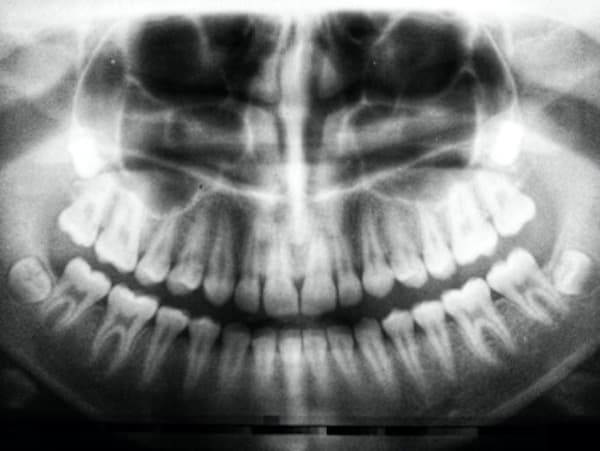Dental x-rays are essential for dental professionals to diagnose and treat their patients effectively. A visual examination alone may not reveal all the details necessary for appropriately treating dental patients. The dentists decide to use x-rays and radiography depending on oral health, age, risk of disease, and many more factors of the patient.
The most common types of dental x-rays are periapical, panoramic, occlusal, tomograms, digital imaging, and bitewing radiograph x-rays. These types of x-rays exist primarily inside two categories, namely – intraoral and extraoral x-rays. The dentist can decide as to which type of x-ray to use for the individual patient.
Intraoral X-Rays
The intraoral x-rays are the more prevalent type of x-rays in dental treatment and they provide an in-depth view of the cavities, roots and the jaw bone adjacent to the teeth. This type of x-rays is useful for evaluating the health of the teeth and analyzing the condition of a developing tooth.

https://unsplash.com/photos/KeVKEs1_RDU/download?force=true
A handheld x-ray is a type of intraoral x-ray which is highly convenient to the patient as it is portable and does not require extra radiation protection accessories. This type of device does not pose any additional threat of radiation risk to either the patient or the dentist than a conventional x-ray imaging device.
Extraoral X-rays
The extraoral type of x-rays are useful for checking the status of the skull and jawbones. Although the extraoral x-rays do not provide the same details as an intraoral x-ray, this type of x-ray has other benefits. The extraoral x-rays are great for keeping track of the development of jawbones to the teeth, analyze impacted teeth, and to monitor the bones of the face.
Types Of X-rays
1. Bitewing X-rays
The bitewing x-ray derives its name from the patient requiring to bite down on a specific specimen of paper while taking the x-ray and it is a type of intraoral x-ray. This biting down enables the dentist to analyze the matching of the crowns of the teeth in the upper and lower jaws of a particular region of your teeth.
Bitewings x-rays are useful for detecting the decays in the teeth as wells as alterations in the bone density which occurs due to gum disease. The x-ray can examine the fit of a cap or bridge over the teeth and also wear or disintegration of dental fillings.
2. Periapical X-rays
Periapical x-ray is also an intraoral x-ray that covers an entire tooth from the crown to the jaw bone. The x-ray shows either the entire set of teeth in a part of the upper jaw or the lower jaw. This type of x-ray is useful for detecting odd changes to the root and adjacent bone structure of a tooth.
3. Panoramic X-rays
The panoramic x-ray is an extraoral type of radiography that displays the entire mouth while using only a small quantity of ionizing radiation. Panoramic x-rays can help the dentist in discovering tumors, fully-grown and emerging teeth such as wisdom teeth, and teeth hit with force. The panoramic x-ray machine revolves around the head of the patient sitting on a dental chair for taking the radiography image.
4. Digital Imaging
Digital imaging is a new technology that sends the 2-D image of x-ray instantaneously to the monitor of the medical practitioner. Digital imaging poses various advantages over traditional x-ray imaging such as enlarging and enhancing the image on the screen, saving the image and printing it out in a short time.

https://unsplash.com/photos/xhiWqmLDKpk/download?force=true
The x-ray image is also sendable via electronic communication means to another dental or medical professional for getting a second opinion. Digital imaging also utilizes lower radiation than other types of x-ray imaging.
What To Look For While Buying X-ray Machines?
- Precision: The most important factor while buying an x-ray machine is that it must provide accurate and precise results. Even with multiple observations, the variation of readings should not vary much. The x-rays must also adhere to the industry standard of 5 percent variation in error on its observations.
- Safety: While the x-ray is useful in medical use, it must also be reasonably safe for both the patient as well as the doctor. Modern advancements ensure that x-ray machines only use the minimum amount of radiation for obtaining a clear image in the result.
- Shelf Life: The x-ray machine is a considerable investment and it must have sufficient durability to last under consistent usage over a period of time. An x-ray machine with a lower number of moving parts can last considerably longer than ones with a large number of moving parts.
- Minimize Time Wastage: The x-ray machine should preferably provide the x-ray results within a short duration of taking the procedure. The time for which the exposure to radiation takes place also needs to be lower as a higher duration is more harmful to health.
Conclusion
Dental x-rays aid the dentist in viewing the inside and between the teeth of the patient which are not visible from the outside. The early recognition and treatment of oral issues and diseases can help in reducing the pain, money, and discomfort that the patients have to suffer.
X-rays can expose the facial bone composition, jaw placement and more information regarding the roots of the teeth. The x-rays being a type of energy can pass through solid objects and the solid objects can also absorb the radiation. The absorption of energy by opaque and substantial objects is the reason behind the x-rays exposing features such as the teeth and bones.
